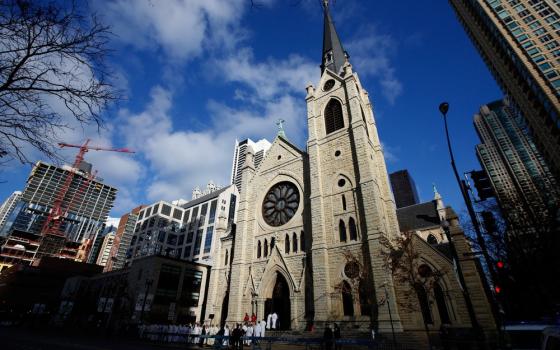Thirty years ago, when my journalistic ambitions were directed toward the broad religion story, and especially the story of the Catholic community, I could never have imagined that so much of my career would be taken up with following and reporting on the widespread and horrific criminal activity of Catholic priests and a hierarchical culture hell bent on covering it up.
The latest report from Ireland -- a country that has apparently traded in its long reputation as devoutly Catholic for a deep skepticism and rejection of the church that has been exposed in recent years – should be reason enough for someone in the hierarchy to demand an investigation of the clerical culture to find out how it harbored and fostered such monstrous behavior.
The report from Ireland, a national look at widespread physical, emotional and sexual abuse in schools and other institutions run by Catholic religious orders, is just the latest in a series of reports. We are warned that another is expected soon from the Archdiocese of Dublin. It is a report that Archbishop Diarmiud Martin, one of the few leaders who seems to understand the depth of destruction that the scandal has caused, says “will make each of us and the entire church in Dublin a humbler church.”
I am not anti-clerical or anti-institutional. But I also think for the institution to retain any credibility as a moral force in the world, it has to confront the clerical mess in a far more forceful and deliberate and detached way than has been the case since this scandal first broke in 1985.
My life was shaped in large ways by my association with priests and I have many priest friends today. The sanest and healthiest among them know that something is deeply amiss within their culture and that the old presumptions of clerical privilege and secrecy can no longer hold out against an educated laity that demands accountability.
In almost every instance in the United States where an outside agency has investigated a diocese, the numbers of priests involved and the severity of the abuse always turns out far greater than the numbers initially advanced by the bishop or archbishop. The studies being done, while helpful to a certain extent, are based on self-reporting by the dioceses, so one must take all of that information with a large dose of skepticism.
Those reports should be read in tandem with reports like those produced by grand juries in Philadelphia, Long Island and elsewhere or with the documents released in Boston or with the countless documents available at bishopaccountability.org, one of the most exhaustive repositories of such information. Read good reporting (the stories and books produced by Jason Berry and the late Gerald Renner) about the case of Fr. Maciel and his Legionaries and how he duped so many in the curia, up to and including the pope, for so long before being found out.
The most consistent defense of the church has been “we didn’t know at the time how dangerous this was” and “everybody else does it.”
However, as we reported recently, documents promulgated by the Servants of the Paracletes as early as the 1950s, show that the order, which cared for abusive priests, recognized that sexual predators had a high recidivism rate. Documents that are occasionally unearthed by grand juries show that the church had a fairly comprehensive understanding of the dangers and dimensions of the scandal. Further, the Irish government report rejected that rationale, citing the orders’ own documentation of recidivism of sexual and physical abusers.
It is hardly persuasive as an excuse to point out that abuse occurs elsewhere, that the church is like every other secular arena, that school teachers and Boy Scout leaders also abuse children. Certainly abuse occurs everywhere, from living rooms to classrooms. But since when do we measure the expectations of how the Catholic community will conduct itself on how secular institutions behave? We all expect more from a church that claims to live the compassion of Jesus and the boundless mercy of God. It is an empty comparison because no other structure has so deliberately and systematically protected abusers and dismissed their victims.
As has been the case with my career, the sex abuse scandal has deflected the church’s attention, energy and resources away from so many other matters that should be central concerns of the Catholic community. It keeps sapping the church’s strength and credibility and it grossly distorts and overshadows in the eye of the wider culture what the church is at its best. If the Catholic clergy is ever to regain its footing, it won’t be by escaping to the robes and manners of a previous age. It will require an honest and dispassionate exploration of how it got so far off track in so many places.




